Woodstock Soapstone Progress Hybrid Wood Stove Review
- November 15, 2023
- 0 comment
When it comes to home heating, the Woodstock Soapstone Progress Hybrid Wood Stove stands out as a top-tier choice. First introduced in 2011, this EPA 2020 Certified hybrid wood stove combines a catalytic combustor with a secondary combustion system, ensuring nearly complete combustion. This innovative design delivers exceptional efficiency, ultra-low emissions, and reliable warmth. Its advanced soapstone heating technology makes it one of the most efficient wood stoves on the market, offering homeowners a sustainable and cost-effective heating solution.
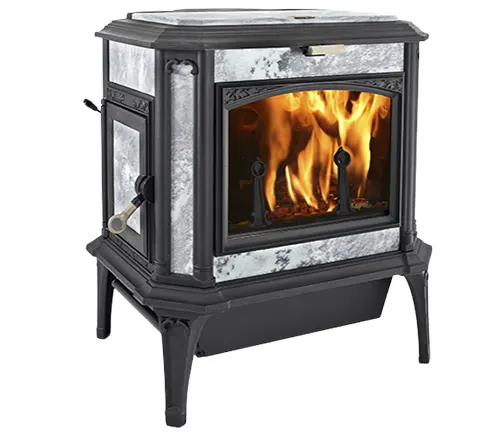
Unmatched Efficiency and Performance
Using the Woodstock Wood Stove has completely transformed my home heating experience. With an impressive 78.5% HHV efficiency rating, this high-efficiency wood stove easily heats up to 2,200 square feet. The ultra-low 0.63 gm/hr emission rate not only minimizes my carbon footprint but also ensures cleaner indoor air quality a big win for both the environment and my family’s health.
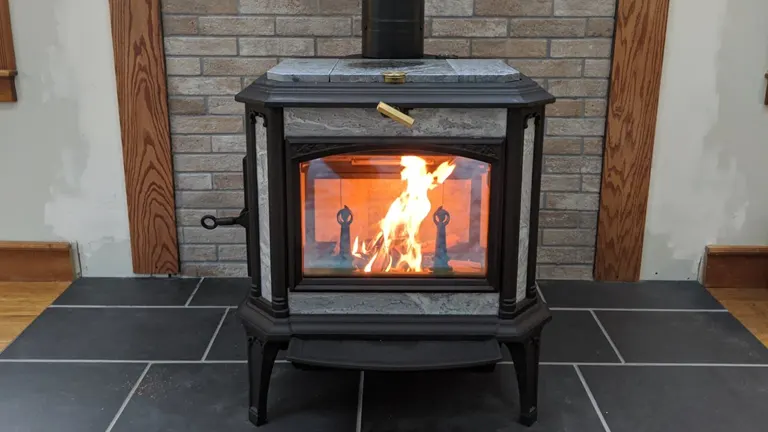
What truly stands out is the extended 10–14 hour burn time, which keeps my home warm through cold nights without the hassle of frequent reloading. This catalytic wood stove combines reliability, eco-friendliness, and exceptional performance, making it one of the best investments I’ve made for efficient, sustainable heating.
Innovative Hybrid Technology
The Woodstock Soapstone Progress Hybrid Wood Stove redefines home heating with its hybrid wood stove technology, combining a catalytic combustor and a secondary combustion system into one powerful unit. This innovative design delivers an exceptionally clean and efficient burn, setting it apart from traditional wood stoves.
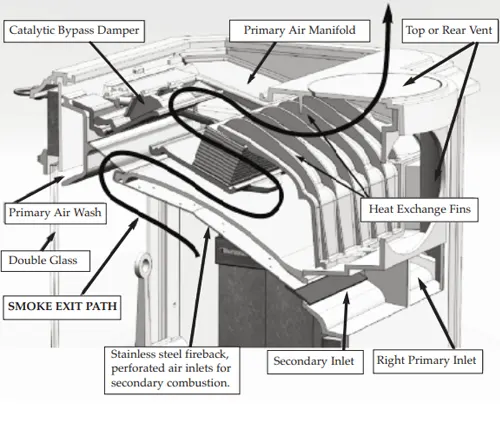
The catalytic combustor begins working at lower temperatures (around 500°F), breaking down wood smoke compounds to reduce emissions and boost heat output. As the fire intensifies, the secondary combustion system seamlessly takes over at around 1000°F, reigniting gases and unburnt particles for maximum energy efficiency. This synergy ensures no heat is wasted, making it a leader in soapstone heating and eco-friendly performance.
What I love most is how smooth the transition between these systems feels—it’s efficient on both low and high burns. The result is a stove that’s not only one of the most efficient wood stoves but also a sustainable choice for reducing environmental impact while keeping my home warm.
Versatile and Practical Features
Multi-Functional Cooktop
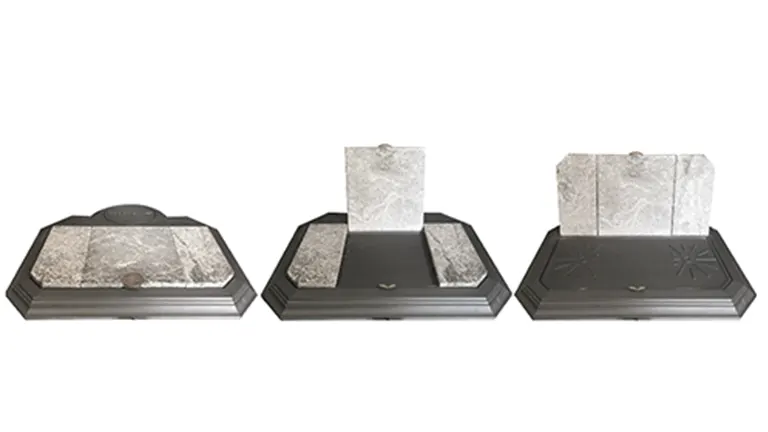
One of the most practical features of the Woodstock Soapstone Progress Hybrid Wood Stove is its built-in soapstone cooktop, which retains and evenly distributes heat perfect for cooking during power outages. I also appreciate the 3-burner cast iron cooktop beneath it, adding extra functionality for meal prep while keeping the house warm. This thoughtful design has been a lifesaver during storms, combining efficiency and versatility in one eco-friendly stove.
Customizable Design and Installation
I love how flexible the Woodstock Soapstone Progress Hybrid Wood Stove is. You can choose from standard 10″ legs or shorter ones for fireplaces, plus customize the door, venting, and leg styles to fit your home.

It’s easy to match this soapstone wood stove to your space and style, making it one of the best choices for adaptable home heating.
Stunning Fire Display and Construction

The Woodstock Soapstone Progress Hybrid Wood Stove doesn’t just provide heat it adds beauty to your home. Watching the flames through its large viewing window is mesmerizing, and its durable construction features thick soapstone layers, a 7-gauge welded steel body, and a decorative cast iron frame.
I also love that it comes in five finishes matte black, charcoal, metallic blue, brown, or gray making it easy to match any décor. This stove combines style, durability, and efficiency perfectly.
Woodstock Soapstone Progress Hybrid Wood Stove Pros and Cons
Pros
- Efficient Heating: With efficiency ratings of 78.5% HHV and 84.4% LHV, it’s one of the most efficient wood stoves available, ensuring more heat output with less wood.
- Eco-Friendly: The ultra-low emission rate of 0.63 gm/hr makes it environmentally friendly, adhering to EPA 2020 standards.
- Large Heating Capacity: Capable of heating up to 2,200 square feet, it’s suitable for large homes and spaces.
- Long Burn Time: Offers a significant burn time of 10-14 hours, reducing the need for frequent wood reloading.
- Hybrid Combustion Technology: Combines a catalytic combustor and secondary air combustion for a cleaner, more efficient burn.
- Durable Construction: Made with soapstone and cast iron, it’s built for longevity and consistent performance.
- Versatile Cooking Option: Features a 3-burner cast iron cooktop under the soapstone top, useful for cooking, especially during power outages.
- Customizable Design: Offers options in color, door orientation, and leg styles to fit various interior designs.
- Easy to Use: Despite its advanced features, it’s user-friendly, even for those new to wood stoves.
Cons
- Weight and Size: Weighing approximately 700 lbs, it can be challenging to install and may not be suitable for all floor types.
- Initial Odor and Condensation: The initial fires produce a curing odor and glass condensation, which might be inconvenient for some users.
- Cost: High-efficiency stoves like this can be more expensive upfront compared to standard wood stoves.
- Regular Maintenance: Although low, it does require regular maintenance like ash removal, glass cleaning, and flue checking.
- Learning Curve: Understanding the hybrid combustion system and optimal operation may take some time for new users.
- Space Requirements: Given its size and clearance requirements, it might not be suitable for smaller rooms or compact spaces.
- Catalytic Combustor Maintenance: The catalytic combustor will eventually need replacement, which is an additional maintenance cost.
Customizable Options
What makes the Progress Hybrid Wood Stove truly stand out is its range of customizable features, designed for convenience and adaptability to different homes.
Largest Capacity Ash Pan
The optional ash pan on my Woodstock Soapstone Progress Hybrid Wood Stove has been a lifesaver. Its massive capacity means I hardly ever have to empty it, which is such a relief as someone who uses the stove daily. It’s one of those features I didn’t realize I’d love so much until I had it.

Front Heat Shield (“Ash Lip”)
I’ve found the front heat shield (“Ash Lip”) on my Woodstock Soapstone Progress Hybrid Wood Stove to be both practical and stylish. It gives the stove a sleek look while reducing front hearth clearance to just 8 inches with tall legs a huge bonus for keeping my space safe and organized. It’s one of those small details that makes a big difference in both design and functionality.
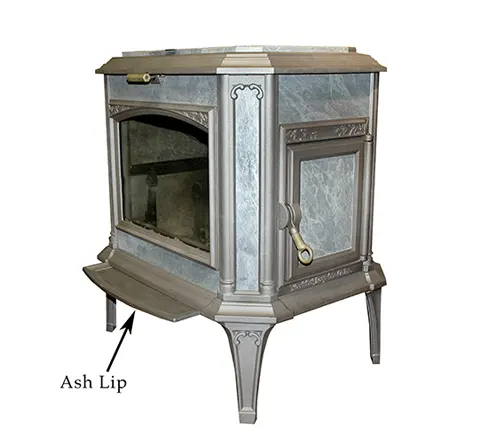
Rear Heat Shield
For smaller spaces, the rear heat shield is a lifesaver. It allows for safe placement just 7 inches from walls, perfect for optimizing room layouts without compromising safety.
Pipe Shield
The pipe shield is another useful option, reducing clearance requirements for single-wall stove pipes. It’s ideal for homes with limited space or unique architectural needs.
Ideal Uses for the Progress Hybrid Wood Stove
I’ve found the Progress Hybrid Wood Stove to be incredibly versatile, making it a perfect fit for a range of settings:
- Residential Homes: This efficient wood stove heats up to 2,200 square feet with ease, making it ideal for large homes in cold climates. It’s a sustainable, cost-effective heating solution.
- Off-Grid Living: Living off-grid? The Progress Hybrid Wood Stove is a lifesaver. It runs without electricity, and the soapstone cooktop adds utility for cooking during power outages.
- Eco-Friendly Heating: For those aiming to lower their environmental footprint, its low emissions and high efficiency make it one of the most eco-friendly heating options available.
- Historic or Traditional Homes: With its soapstone and cast iron construction, this stove adds classic charm while providing reliable heat a great fit for historic or traditionally styled homes.
- Rural or Remote Locations: In remote areas with limited access to fuels, the stove’s long burn time and efficient wood use make it practical and reliable.
- Supplementary Heating: In larger homes, this soapstone wood stove works beautifully as a supplementary heater, cutting down on central heating costs.
- Cooking and Baking: The multi-functional soapstone cooktop isn’t just for emergencies—it’s a rustic, charming way to cook or bake year-round.
- Workshops or Studios: For workshops or studios, the stove provides consistent warmth and a cozy ambiance, making it an affordable heating option.
- Renovation Projects: Renovating an old home or barn? This hybrid wood stove delivers both efficiency and a timeless aesthetic.
- Emergency Preparedness: In regions prone to power outages, this stove ensures you’ll have heat and a way to cook, no matter the weather.
Conclusion
After using the Woodstock Soapstone Progress Hybrid Wood Stove, I can honestly say it’s been a transformative addition to my home. Its incredible efficiency and low emissions make me feel like I’m doing my part for the environment, while its stunning design adds so much character to my space. The durable soapstone wood stove construction and customizable options let me adapt it perfectly to my needs. It’s more than just a heater it’s a centerpiece that keeps my home warm, inviting, and uniquely mine.
FAQs
- Can the Woodstock Soapstone Progress Hybrid be used for both heating and cooking?
Absolutely! The stove features a versatile 3-burner cast iron cooktop hidden beneath the soapstone top, making it ideal for heating your home and cooking, especially during power outages. - How does the hybrid combustion system affect fuel efficiency and emissions?
The hybrid system combines a catalytic combustor and secondary air combustion, significantly enhancing fuel efficiency and reducing emissions. This means you’ll use less wood while also contributing to a cleaner environment. - Is the Progress Hybrid suitable for large homes or open-plan spaces?
Yes, it is designed to heat large areas up to 2,200 square feet, making it perfect for spacious homes or open-plan living areas. - What makes the soapstone in the Progress Hybrid unique compared to other materials?
Soapstone is renowned for its heat retention and distribution qualities. It absorbs heat slowly and releases it steadily, providing long-lasting warmth even after the fire subsides. - How does the Progress Hybrid Wood Stove cater to different aesthetic preferences?
The stove offers several customizable options, including door orientation and a choice of five standard color options. This allows it to blend seamlessly with a variety of interior designs. - Can the Progress Hybrid be installed in non-traditional settings like workshops or cabins?
Yes, due to its robust construction and adaptable design, the stove is well-suited for a variety of settings, including cabins, workshops, and even some off-grid locations. - What is the significance of the stove’s dual-layer soapstone design?
The dual-layer design enhances the stove’s heat storage and emission capabilities. The thick soapstone bricks store heat, while the exterior panels radiate it into the room, ensuring efficient heating. - How does the Progress Hybrid manage to maintain air quality while burning wood?
Thanks to its advanced hybrid combustion system, the stove burns wood more completely, significantly reducing particulate emissions and thereby maintaining better air quality. - What maintenance does the Progress Hybrid require to keep it functioning optimally?
Regular maintenance includes cleaning the glass, emptying the ash pan if used, and occasionally checking and cleaning the flue. The durable build of the stove ensures low maintenance overall. - How user-friendly is the stove for first-time wood stove owners?
The Progress Hybrid is designed with ease of use in mind. Features like easy-to-use air controls and clear instructions for operating the catalytic combustor make it suitable even for those new to wood stoves.

David Murray
Forestry AuthorI'm David Murry, a forestry equipment specialist with a focus on chainsaw operation. With over 13 years of experience, I've honed my skills in operating and maintaining a wide range of machinery, from chainsaws to log splitters. My passion for the outdoors and commitment to sustainable forestry drive my work, which emphasizes safety, efficiency, and staying updated with industry advancements. Additionally, I'm dedicated to sharing my expertise and promoting environmental awareness within the forestry community.


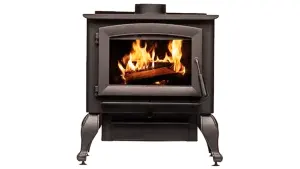



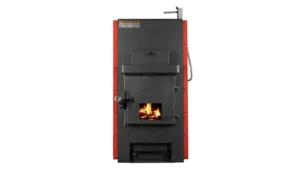
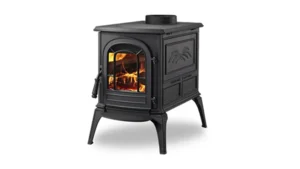


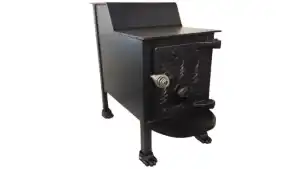

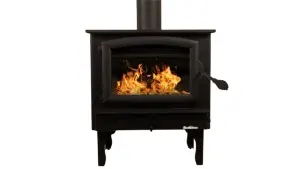
Leave your comment